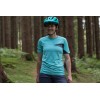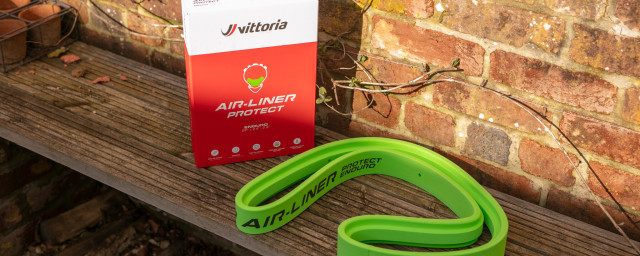13 of the best ways to attach gear to your mountain or gravel bike for shorter to day long rides

With short rides in mind rather than bikepacking, we take a look at the various ways you can attach gear and tools to your bike. Taking the weight out of your backpack and affixing it securely to your bike for quick spins and day rides, most of these ideas will work on both gravel and mountain bikes.
- How to go bikepacking: a beginner's guide to getting started
- Bikepacking basics: bike repair and first-aid kit
- Buyer's guide to hydration packs for mountain biking
Frame strap
There are plenty of these on the market and you’ll likely have seen them if you’ve not already got one yourself. Relatively cheap and uber versatile, these Velcro frame straps are usunally used to attach an inner tube and other small tools to your bike, be it tyre levers, pump or a CO2 cannister. The strap works by fitting the items you wish to secure into either rubber bungees (as on the Louri straps) or the inner velcro straps (see Granite Design Rockband). The strap itself is then wrapped around the frame, through the plastic loop and back on itself and pulled tightly into position in a suitable place on the frame.
We have found that the area where the seat tube meets the down tube works well as does the area between top and down tube near the head tube. Just make sure the contents don’t foul or rub on the shock when the suspension compresses on a full susser. These frame straps are pretty useful in an emergency too, we’ve used one to tie up a broken brake lever when the clamp was broken in a crash in the past.
Rubber straps
Rubber straps, like this one from Voile are equally as versatile, more usually seen binding ski’s together the hardy rubber straps can be used in much the same way as the Velcro frame strap above, they are a sturdy and reliable option for lashing things to other things, lashing things to themselves, lashing things to things that have already been lashed to other things and so on — you get the picture. For short rides we recommend using them to attach a spare tube along with a pump or puncture repair kit to the frame.
They can be useful off the bike too as a bungee replacement or when bikepacking, for use with other equipment such as the Salsa Anything Cages.
Bags
Bags don’t just have to be for bikepacking, there are plenty of smaller ones that are just as useful on short gravel or mountain bike rides. Contents will usually amass to tools, tube and maybe a jacket or extra layer depending on the size of the bag.
Top tube bags – these are universally sized and fit on the top tube of your bike just behind the stem, be it a mountain bike or a gravel one. Some gravel and adventure bikes might be equipped with bosses on the top tub in order to bolt the bag to it for extra security and less wobble. Top tube bags are great for placing ‘easy to reach’ items such as food, a phone, money etc. They wouldn’t be out of place on a mountain bike on days when your are really cranking out the miles and need food to hand.
Frame bag – There are a myriad of frame bags on the market for all sorts of bikes and uses. It’s up to you to decide what size you nee, how much you want to put in it and what shape you need to fit your bike. A frame bag can be useful on longer day rides to hold a good amount of food, maps or extra layers. It’s best to use of these bags if you can fill it with gear as smaller items tend to roll and jump about inside the space otherwise.
Hardtail mountain bikes and all types of gravel bikes will be easier to fit bags too as there is lots of room inside the front triangle, although care does need to be taken to ensure that you can still reach and get to your water bottle if you are using one.
Full suspension mountain bikes will be more difficult (but not impossible) to find a decent frame bag. Brands such as Alpkit will make them to order for your shape and size of bike. If it’s something smaller you desire then there are companies that will make something custom for you such as Wee Cog or, from New Zealand, Dirt Bag Utility as seen on our Rachael’s Cotic Rocket. Rach fits a tube, multi tool, tyre levers, mini pump, tubeless repair kit and a snack in her bag situated under the shock and close to the bottom bracket on her Cotic, meaning she just either needs to take a bum bag or water bottle for hydration on short rides.
Bar bag – small bar bags are also a great place to store snacks, gels and a mobile. These small options as less bulky than a full blown handle bar bag designed to carry a sleeping bag or parts of a tent. They usually attach either side of the stem and around the head tube and will hold between one and two litres of gear. The padding on offer and the stability of the bag will denote what kind of riding this bag can be useful for, longer rides with less technical terrain is probably more up its street.
Saddle pack – Again we are talking small packs here that fit neatly under the saddle rather than large bags that stick out from behind the seatpost. These little packs are best for rigid posts rather than dropper posts as they would interfere with the action and scratch the stanchion. Brands like Dakine make a small tool roll which attaches to the saddle rails and fits into a similar space as a saddle pack but it doesn’t touch the seatpost meaning the post can move freely.
Saddle strap
A saddle strap is much like the Velcro frame strap but the ones destined for saddles are longer. You can attach much of the same kit (tube, tyre levers etc) and lodge it safely under your saddle.
Bottle cage with tools
Some brands including Lezyne and Syncros make products that integrate a bottle cage and multi-tool. It’s another sneaky way to make sure you always have a multi-tool to hand. Just beware, if you don’t have much clearance for a bottle cage and a larger bottle then these might not suit your frame as most raise the ‘stack’ height of the cage a little.
Tool Caddy
Bottle cages can also be used to fit a ‘tool keg or caddy’. This is essentially a water bottle with a wider circumference opening at the top to allow you to insert tools. Some, such as this one made by Fabric comes with an inner neoprene liner to prevent tools from rattling annoyingly on the plastic whilst riding. These are great if you are either not bothered about carrying a water bottle or if you have more than one set of bottle bosses.
Bow Tie Strap Anchors
These are relatively new, we’ve just got some in for test so can’t comment on their performance just yet but they look pretty nifty. Essentially they attach to you bike at the bottle bosses and enable various pieced of equipment to be strapped to them without sliding around the frame tube you attach them too. Rubber straps such as the Voile ones would be great to use with the Bow Ties. The manufacturers says they can be mounted to fork legs or any part of the frame in order to carry larger pieces of equipment such as gas cannisters or larger water container. OK, with this one we might be delving into the world of bikepacking a little……
Steerer tube tools
There are two options at the moment to enable you to hold tools in your steerer tube. One is the Specialized SWAT CC tool that we reviewed here and the other is the OneUp Components ECD tool. The first is a simpler set up, the whole assembly does away with the star nut in your fork steerer and your top cap, instead clamping together from top to bottom with its own top cap and lower brace under the fork crown, the tool holds a small multi tool, there is space to add a quick link and the two pieces can be used as a chain breaker. The latter is more involved to fit, the steerer tube needs tapping, the assembly then screws in place and the tool slots down into the steerer. The ECD tool has a fews more functions including tyre levers, spoke keys, CO2 canister storage.
Handlebar plugs
The most common things to place in handlebar ends is a tubeless repair plug. Product like the Sahmuari affix the plug and the insertion tool to a bar plug which is easy to whip out and use in a puncture emergency.
Bikes with storage
If there are no budget limitations on your quest to attach gear to your bike then you might want to look at bikes with storage systems already in place. The Specialized SWAT system is the one that jumps to mind, available on the higher end mountain bikes. Specialized also make little boxes like this one on the S-Works Diverge gravel bike. Canyon make a similar box for the new Spectral available on the most expensive bikes in the range but can be retro fitted to any Spectral.
You might also like:
- Best mountain bikes for under £3,000 - capable trail bikes that won't break the bank
- The best gravel and adventure bikes you can buy for under £1,000
- The best gravel and adventure bikes you can buy for under £2,000
























4 comments
I've been using a frame strap for last few years and love them on all the bikes. Never had a problem. If conditions are grim then I use a Louri dry bag to protect all contents. Much more convenient than a saddle bag and the mud won't effect the zip which was always when they failed for me
Does ANYBODY proof read ANYTHING at road.cc before it's published? This copy looks like it was written by somebidg possessing only a passing familiarity with the English language
Whilst undertaking the Transpennine last year I suffered a puncture 26 miles from my finish, no problem I thought, as I swapped the tube then attempted to use my pump that had been attached to my bottle cage, alas the mud and grime accumulated during the day had made my pump useless.
Lesson learned, bought a better pump and CO2 pump and keep them protected from the worst of the elements by slipping them inside an old tube cut to size.
p.s. Thanks Linda once again for the recovery service that night.
If you are happy to try and put a mud encrusted and filthy tube in your tyre then use a frame strap.